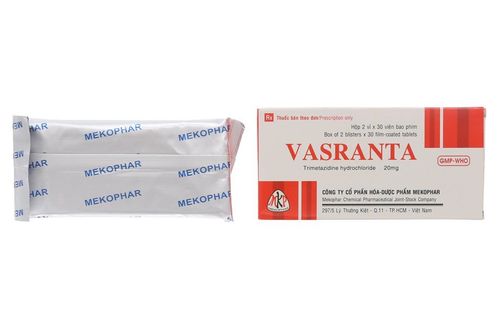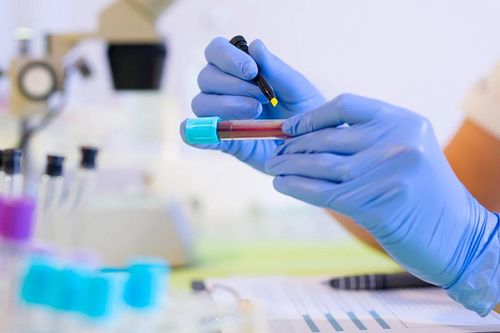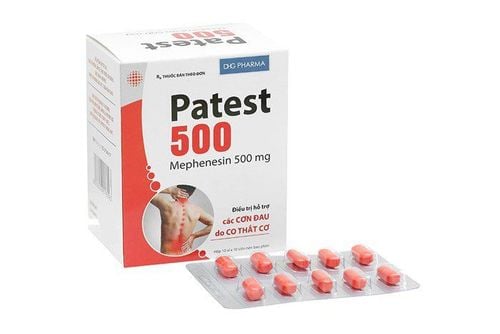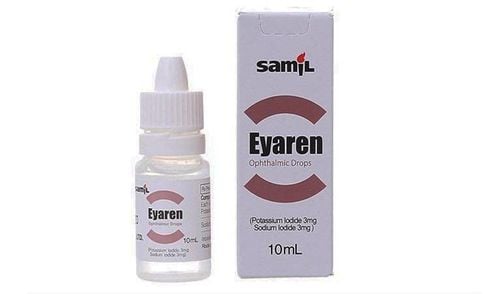This is an automatically translated article.
Neurofibromatosis type 1 is an autosomal dominant inherited disease caused by a chromosomal disorder. Most diseases do not seriously affect health, but when the tumor grows large, causing scoliosis, impaired vision, ... it can be treated with surgery or radiation.1. What is neurofibromatosis type 1?
Neurofibromatosis type 1 (NF1) is also called peripheral neurofibromatosis or von Recklinghausen's disease. This is an inherited genetic disorder caused by a disorder of chromosome 17.Among neurofibromas, NF1 is the most common type that usually appears in childhood with tumors that develop on the skin and soft tissues. , bones and nerves. However, this is a benign tumor and does not seriously affect health but only causes problems in appearance.
The risk of type 1 neurofibromatosis progressing to cancer (sarcoma) is relatively low.
2. Symptoms of neurofibromatosis type 1
Most often, neurofibromatosis type 1 causes skin symptoms with the following characteristics:More than 6 brown or milky coffee-colored spots larger than 5mm in diameter on the skin. Babies with type 1 neurofibromatosis can easily see these spots on their skin after birth. As they grow older, the number and size of these spots also increase. Freckles appear in the armpits, groin or areas with skin folds. Develops benign tumors under the skin or may deepen over time. These are tumors on nerve fibers, which can be soft or hard, variable in size, painful or not. When growing in mass, the tumor can be unsightly and affect the patient's life, requiring surgical removal. Some cases of neurofibromatosis type 1 cause skeletal deformities and neurological symptoms. Depending on the location and number, the disease causes different neurological symptoms. Skeletal abnormalities due to the formation of subcutaneous plexiform neurofibromas or may be deeper and larger, affecting skeletal structures such as scoliosis, prosthetic joints, fibrous dysplasia, submening cysts bones, scalloped vertebrae.
Neurofibromatosis type 1 can cause complications on the following parts:
Eyes: When the tumor grows on the optic nerve, it can protrude, impair vision and even cause blindness. . Small tumors that appear on the iris (Lisch nodules) are usually yellow-brown but do not affect vision. Head: Causes cerebral circulatory insufficiency, brain tumor, headache, epilepsy. Cardiovascular: The patient has symptoms of hypertension. Gastrointestinal: Abdominal pain, or vomiting, diarrhea or chronic constipation. Other complications: Early or late puberty, leukemia, learning disabilities, mental retardation.

U sợi thần kinh loại 1 là bệnh lý di truyền theo gen trội
3. Diagnosis of neurofibromatosis type 1
The diagnosis of neurofibromatosis type 1 is mainly based on clinical examination and family history. CT or MRI is indicated in patients with neurological symptoms that can help detect optic nerve damage caused by tumors such as swelling, glaucoma lesions.According to the National Institutes of Health, diagnostic criteria for neurofibromatosis type 1 include:
There are more than 6 milk coffee spots larger than 5mm in diameter (before puberty) or larger than 15mm (after puberty). There are more than 2 types of neurofibromatosis or 1 neuromuscular plexus. Underarms and groin appear freckles, macules on the skin folds are darker than usual. Optic gliomas impair vision. There are more than 2 Lisch nodules on the iris. Characteristic bone lesions appear. Heredity, family history of having a close relative with neurofibromatosis type 1. A patient is diagnosed with neurofibromatosis type 1 when 2 or more of the above criteria are present.

Chụp CT hoặc MRI được chỉ định ở bệnh nhân u sợi thần kinh loại 1
4. Treatment of neurofibromatosis type 1
Peripheral neurofibromatosis has no specific treatment. When diagnosed with neurofibromatosis type 1, patients should be monitored closely for tumor progression or for signs of pain or weakness.Over time, if the tumor is advanced and severe, the patient can be treated surgically or irradiated to remove the tumor. However, this can affect the function of the nerves involved.
In the case of optic glioma or central nervous system damage, malignant progression, it can still be treated with chemotherapy or radiation.
In summary, neurofibromatosis type 1 is a common type of tumor caused by genetics. Most diseases do not seriously affect health, but when necessary, they can be treated with surgery or radiation.
Therefore, to protect health and prevent complications, when detecting symptoms related to neurofibromatosis type 1, patients need to go to the hospital to be examined by a neurologist. Currently, Vinmec International General Hospital is one of the most prestigious medical treatment units for neurological diseases in Vietnam. The Department of Neurology at Vinmec has the function of examining, diagnosing, consulting and treating diseases related to neurological factors.
Visiting neurological diseases at Vinmec, customers will be:
Visited by a team of highly qualified and experienced specialists such as: Doctor Nguyen Thi Minh Phuong, Doctor Bui Ngoc Phuong Hoa, Doctor Dr. Vu Duy Dung ... State-of-the-art equipment, comparable to major hospitals in the world: The most modern operating room in the world; The most modern silent magnetic resonance imaging machine in Southeast Asia; The 16-sequence PET/CT and SPECT/CT systems help in early detection of neurological damage even when there are no symptoms of the disease. Apply the most advanced intensive treatment techniques in the world in treatment.
Please dial HOTLINE for more information or register for an appointment HERE. Download MyVinmec app to make appointments faster and to manage your bookings easily.













